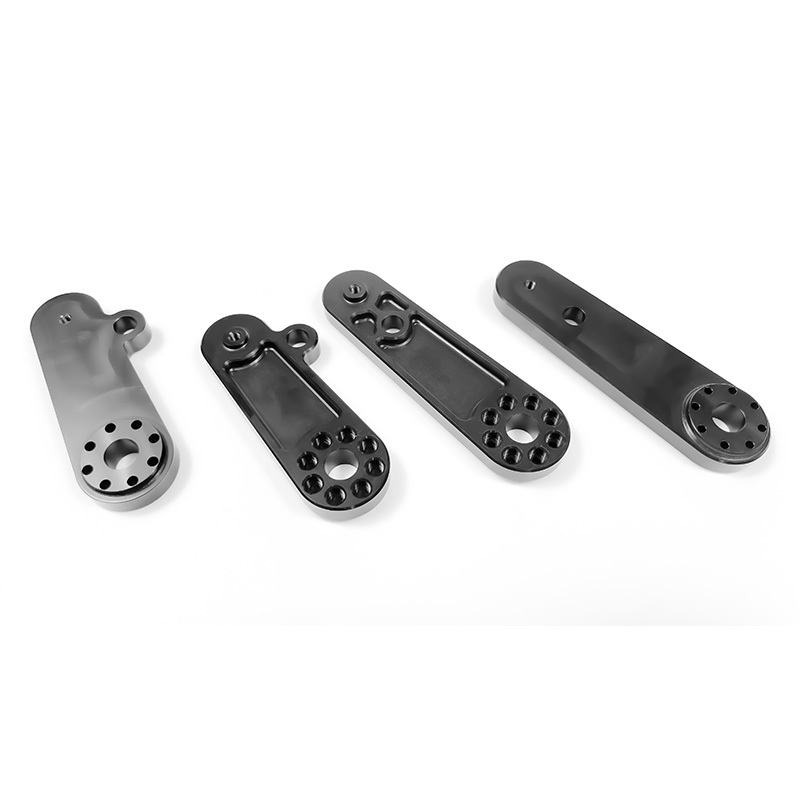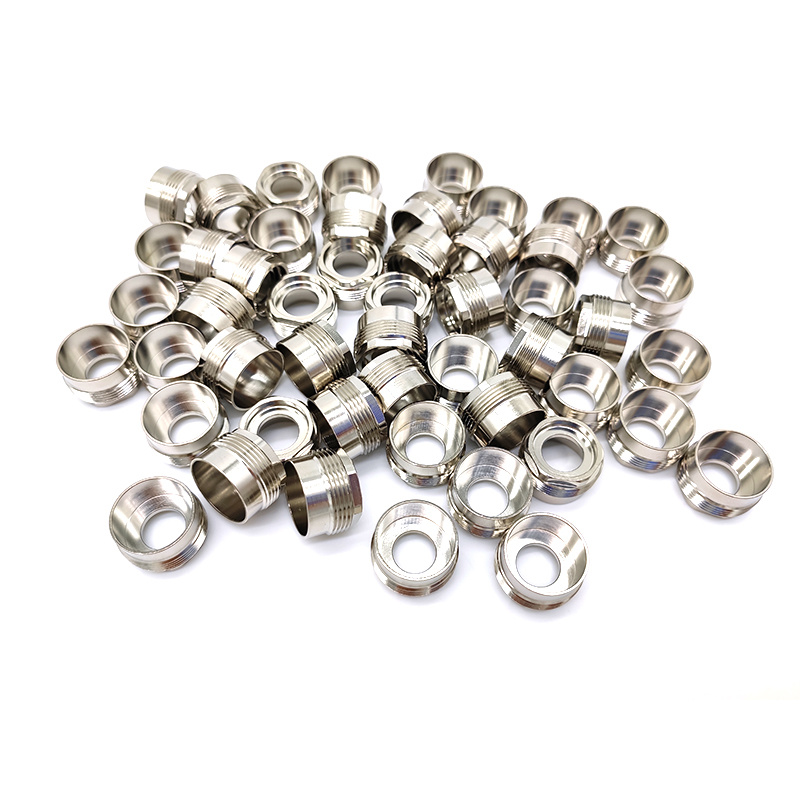Why Precision Matters in Injection Molding Processes: Unlocking the Secrets to Quality and Efficiency
Time:
2025-05-23 10:20
Source:
Why Precision Matters in Injection Molding Processes
Table of Contents
- 1. Introduction to Injection Molding
- 2. The Importance of Precision in Injection Molding
- 3. Key Components of the Injection Molding Process
- 4. How Precision Affects Product Quality and Performance
- 5. Cost Efficiency Through Precision
- 6. Technological Advancements in Precision Injection Molding
- 7. Quality Control Methods to Ensure Precision
- 8. The Future of Precision in Injection Molding
- 9. Conclusion
- 10. Frequently Asked Questions
1. Introduction to Injection Molding
Injection molding is a widely used manufacturing process that allows for the creation of complex shapes with high precision. This technique is crucial in industries ranging from automotive to consumer goods, where the demand for high-quality products continues to rise. Understanding the significance of **precision** in injection molding processes can greatly enhance product quality, operational efficiency, and overall profitability.
2. The Importance of Precision in Injection Molding
Precision is not merely a buzzword in injection molding; it is a fundamental requirement. The quality of the final product is heavily dependent on the precision during the molding process. Here are some key reasons why precision is vital:
Consistency and Reliability
Precision ensures that each molded part is consistent and reliable. Inconsistent measurements can lead to flawed products, resulting in increased waste and customer dissatisfaction. By maintaining high precision standards, manufacturers can produce parts that meet exact specifications, thus building trust with their customers.
Enhanced Product Performance
Products manufactured with precision tend to perform better. For instance, in the automotive industry, components that fit together flawlessly can enhance the overall performance of the vehicle. Poorly molded parts may lead to mechanical failures, safety issues, and costly recalls.
3. Key Components of the Injection Molding Process
Understanding the components that contribute to precision in injection molding is essential. These include:
Molding Machine
The molding machine is the heart of the injection molding process. Machines equipped with high-precision controls and advanced technology can significantly improve accuracy. Features such as **closed-loop hydraulic systems** and **computer numerical control (CNC)** enable precise control over the injection process.
Molds
Molds are critical to achieving precision. High-quality molds made from durable materials and designed to exact specifications can create intricate designs with minimal defects. The cooling and heating systems within molds also play a significant role in maintaining dimensional accuracy.
Raw Materials
The choice of raw materials can affect precision. Engineers must select the right plastics that can withstand the injection process without warping or deforming. Consistent material quality ensures that the final products meet stringent industry standards.
4. How Precision Affects Product Quality and Performance
Precision impacts product quality from the initial design phase through to the final output. Here’s how:
Dimensional Accuracy
Dimensional accuracy is crucial in injection molding. Parts with even minor dimensional discrepancies can lead to assembly issues and functional failures. Manufacturers employing precise measurements can ensure that every part fits as intended.
Surface Finish
The surface finish of molded products is often a direct result of the precision of the injection process. High-precision injection molding can produce smooth surfaces that require minimal post-processing, enhancing aesthetic appeal and functionality.
Material Integrity
Precision contributes to the integrity of the materials used. Proper control of the injection temperature and pressure helps maintain the physical properties of the plastic, reducing the likelihood of defects such as **bubbles**, **voids**, or **cracks**.
5. Cost Efficiency Through Precision
Investing in precision might seem like an extra cost initially, but it leads to significant savings over time.
Reduced Waste
Precision reduces waste by minimizing the number of defective products. Fewer defects mean less time and resources spent on rework and repairs, leading to higher efficiency and cost-effectiveness.
Time Savings
Precision accelerates the production process. With reduced defects and the need for less rework, companies can meet production deadlines more consistently. This efficiency can translate to increased output and profitability.
Long-Term Reliability
Investing in precision pays off in the long run. High-quality, well-made products result in fewer returns and repairs, fostering customer loyalty and enhancing brand reputation.
6. Technological Advancements in Precision Injection Molding
As technology progresses, the injection molding industry is experiencing transformative changes that enhance precision.
3D Printing for Prototyping
3D printing technologies have revolutionized prototype development in injection molding. Manufacturers can quickly create precise prototypes, allowing for testing and adjustments before full-scale production.
Advanced Software Solutions
Software solutions equipped with sophisticated algorithms provide real-time monitoring and adjustments during the injection process. This technology ensures consistent precision throughout the production cycle.
IoT and Smart Manufacturing
The Internet of Things (IoT) is emerging as a game-changer in manufacturing. IoT devices can collect and analyze data from molding machines, enabling predictive maintenance and optimization of the injection process to enhance precision.
7. Quality Control Methods to Ensure Precision
Effective quality control methods are essential for maintaining precision in injection molding.
Statistical Process Control (SPC)
SPC uses statistical methods to monitor and control the injection molding process. By analyzing data, manufacturers can identify variations and make necessary adjustments to maintain precision.
Automated Inspection Systems
Automated inspection systems equipped with advanced imaging technology can detect defects in real-time. These systems ensure that only products meeting precision standards proceed through the production line.
Regular Calibration of Equipment
Regular calibration of molding machines and tools is crucial for maintaining precision. Manufacturers must adhere to strict calibration schedules to ensure that equipment continues to perform accurately.
8. The Future of Precision in Injection Molding
The future of injection molding is poised for more advancements, especially concerning precision.
Sustainable Practices
The focus on sustainability is driving the evolution of injection molding processes. Precision manufacturing techniques can reduce material waste and energy consumption, aligning with global sustainability goals.
Integration of AI
Artificial Intelligence (AI) is set to play a crucial role in precision injection molding. AI algorithms can analyze vast amounts of data to optimize production processes and improve precision, leading to even higher quality products.
Customization and On-Demand Production
The demand for customized products is rising. Precision in injection molding allows for flexible, on-demand production capabilities, enabling manufacturers to meet specific customer requirements without sacrificing quality.
9. Conclusion
Precision in injection molding processes is not just important; it is essential for achieving high-quality products and operational efficiency. By understanding the factors influencing precision—from machinery and materials to technology and quality control—manufacturers can enhance their processes and deliver superior products. As the industry continues to evolve, embracing precision will be vital for remaining competitive and meeting the ever-growing demands of consumers.
10. Frequently Asked Questions
1. What is injection molding?
Injection molding is a manufacturing process used to produce parts by injecting molten material into a mold. This process is commonly used for creating complex shapes and high-volume production runs.
2. Why is precision important in injection molding?
Precision is crucial in injection molding because it ensures that each part meets exact specifications, enhances product performance, reduces waste, and improves overall manufacturing efficiency.
3. How can I improve precision in my injection molding process?
You can improve precision by investing in high-quality molds, utilizing advanced machinery with precise controls, implementing rigorous quality control measures, and adopting modern technologies like IoT and AI.
4. What role does technology play in enhancing precision?
Technology enhances precision by enabling real-time monitoring, data analysis, and automation of the injection molding process, leading to improved accuracy and efficiency.
5. What are the common defects associated with poor precision in injection molding?
Common defects include dimensional inaccuracies, surface imperfections, and material inconsistencies, which can lead to product failures and increased manufacturing costs.
By focusing on these aspects, manufacturers can ensure that precision remains a cornerstone of their injection molding processes, driving quality and efficiency in production.
injection molding precision
Related news
2024-11-15
2025-05-23








